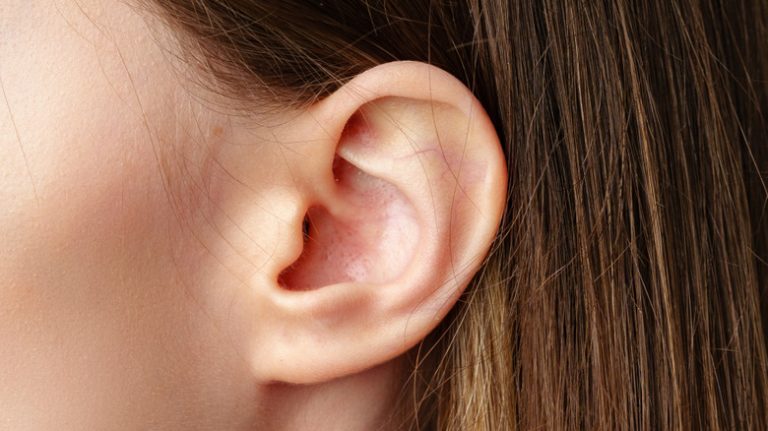Quest Nutrition, a leading producer of health food products, is best known for its popular protein bars available in flavors like Chocolate Peanut Butter, Birthday Cake, and Cookies & Cream. The company also provides a variety of other high-protein products including shakes, powders, cookies, candies, chips, and even frozen pizza (via Quest Nutrition). Quest products are easily accessible online and in natural, grocery, and mass-market stores nationwide. According to Dun & Bradstreet, Quest Nutrition’s annual revenue exceeds $62 million.
While Quest products are marketed as health-food items, some have questioned their health benefits (including Spoon University). This raises the question: What defines a “healthy” protein bar? Kristin Kirkpatrick from the Cleveland Clinic Wellness Institute suggests considering calories (100 to 200 for a snack, 300 for a meal replacement), protein (at least 15 grams, ideally 20 grams), and carbs (no more than 1.5x as many carbs as protein), based on Women’s Health. How do Quest Nutrition products measure up? Read on to find out the truth.
Most Quest Nutrition products offer a lot of protein
Adequate protein intake is essential for good health. As per MedlinePlus, “Protein is necessary in your diet to aid in cell repair and generation.” Most Quest Nutrition protein bars contain 20 to 21 grams of protein (via Quest Nutrition), although some products, like Fudgey Brownie Candy Bites, contain only 5 grams. To calculate your daily protein requirements, multiply your weight by 0.36 (via Harvard Health).
Quest products use whey protein isolate and milk protein isolate, which some nutritionists criticize. According to Spoon University, these are highly-processed by-products of factory cheese production. However, Medical News Today reports that whey protein isolate can support lean muscle mass, weight loss, and lower cholesterol levels, although excessive consumption may lead to nausea and headaches. Milk protein isolate is praised by Healthline as an excellent protein source containing essential amino acids, though too much may cause digestive issues and isn’t suitable for those with dairy allergies or lactose intolerance.
Quest bars contain artificial sweeteners
Quest bars are known for their sweet taste despite containing just one gram of sugar. This is due to three sugar substitutes: sucralose (Splenda), stevia, and erythritol (via Quest Nutrition). The Mayo Clinic states that artificial sweeteners can prevent tooth decay and aid weight loss and diabetes management, although they’ve faced criticism for potential harm. Healthline notes mixed research on sucralose, while stevia is FDA-approved in its purified form. Erythritol, a sugar alcohol, is considered safe but may cause digestive issues for some.
Ultimately, moderation is key with sugar substitutes. You should probably avoid overindulging in Quest Nutrition products for this reason.
Quest products add fiber
High-fiber diets can help protect against conditions like diabetes, heart disease, and some cancers (via NPR). Adequate fiber intake can also improve blood pressure, blood sugar, and cholesterol levels. Women should consume 21 to 25 grams of fiber daily; men, 30 to 38 grams (via the Mayo Clinic). While some dietitians recommend natural fiber sources, others believe supplementing with snack bars can help meet fiber needs. Quest bars now include soluble corn fiber, offering 13 to 17 grams of fiber per serving, whereas they previously used isomalto-oligosaccharides (IMO), described as “fraudulent fiber” by Kion. Although soluble corn fiber may offer benefits, it’s often linked with processed foods associated with health issues (via Healthline).
If you wish to avoid saturated fats, you may want to put down that Quest bar
Saturated fats and trans fats are generally considered unhealthy and should be avoided. The Dietary Guidelines for Americans recommend limiting saturated fats to improve health. If you’re avoiding saturated fats, you might want to skip Quest bars, which contain 2 to 3 grams of saturated fat each. While a 12-ounce steak contains 20 grams, it’s advised to consume less than 10% of daily calories from saturated fats—16 to 22 grams for a 2,000 calorie diet (via MedlinePlus). Instead, focus on healthy, unsaturated fats from seafood, nuts, seeds, olive oil, canola oil, and avocado.
Processed foods like Quest Nutrition products contain high levels of sodium
Excess sodium intake can lead to health issues. The American Heart Association recommends no more than 2,300 milligrams per day, ideally no more than 1,500 milligrams. Quest Nutrition protein bars contain between 200 and 280 milligrams of sodium. To reduce sodium intake, the CDC advises choosing fresh fruits and vegetables, reading nutrition labels, and avoiding processed meats and packaged products. When dining out, request nutritional information to make informed choices.
Eating Quest bars can lead to bloating and other digestive problems
Have you experienced stomach issues after consuming Quest Nutrition products? Colleen Tewksbury from Penn Medicine highlights that some protein bars may cause “crampy, farty, and bloated” feelings (via Self). Ingredients like added fiber and sugar alcohols can be problematic, as seen with Quest bars containing soluble corn fiber and erythritol (via Quest Nutrition). Healthline notes that “protein farts” are common after consuming whey protein, which Quest Nutrition products contain. Whey protein products often also contain lactose, potentially causing gassiness even in those not typically lactose-sensitive.
Quest bar flavors are based on desserts
Not all things about Quest Nutrition are negative. If you’re aiming to avoid cookies, brownies, cakes, and other junk foods, Quest products might satisfy cravings with minimal sugar and carbs, plus added protein. Predator Nutrition ranks top Quest bar flavors, including Cookies & Cream, Chocolate Chip Cookie Dough, and Chocolate Sprinkled Donut. Quest Nutrition lists their best sellers as Chocolate Chip Cookie Dough, Birthday Cake, and Chocolate Chip protein bars. However, a 2021 study in JAMA suggests sucralose might increase food cravings in some populations, especially women with obesity. Instead of artificially-sweetened foods, Colgate recommends healthy alternatives like fruit, Greek yogurt, peanut butter with bananas, and chia pudding.
Quest bars are gluten-free
For those on a gluten-free diet, Quest bars are gluten-free. Although going gluten-free has become trendy, it’s not necessary for most people. The Mayo Clinic explains that a gluten-free diet requires avoiding wheat and some other grains while choosing nutrient-rich substitutes. Conditions like celiac disease, non-celiac gluten sensitivity, gluten ataxia, and wheat allergy may benefit from such a diet. If you don’t have these conditions, there are reasons not to go gluten-free (via Providence Health & Services). Carbohydrates, where gluten is found, should comprise 55-65% of a healthy diet. Gluten-free diets are unlikely to aid weight loss and may not self-diagnose celiac disease. Consult a doctor if you suspect a medical condition.
Quest Nutrition makes pizza
Seeking a pizza fix for Friday night? Quest Nutrition offers a thin-crust frozen pizza option high in protein and low in carbs (via Quest Nutrition). The company sells four flavors: 4-Cheese, Supreme, Uncured Pepperoni, and Meat Lover’s. Nutrition facts show 20 to 28 grams of protein and 5 to 6 grams of carbohydrates per serving, depending on the flavor. Women’s Health Magazine lists Quest Nutrition pizza among “The 12 Healthiest Frozen Pizzas You Can Buy, According to Nutritionists,” describing it as keto-friendly and high-protein. Video blogger Kathleen Hart provides a positive review on her YouTube channel lil Piece of Hart.
You can bake Quest bars
Here’s a cool tip: If you crave cookies but want to avoid flour, sugar, butter, and excess calories, try this high-protein, low-sugar baking hack. Baking Quest bars completely changes their texture into warm, gooey deliciousness. Protein Cakery suggests baking Quest bars by heating the oven to 325 degrees Fahrenheit, cutting the bar into eight pieces, placing them on a parchment-lined baking sheet, baking for three to five minutes, flattening with a spatula, and baking for three more minutes. Let cool and enjoy. You can also make healthier Cookie Crisp cereal to eat with Greek yogurt and almond milk (via Spoon University). Blogs like Bon Appétit mention Quest poptarts, pancakes, and mug cakes. If baking sounds like too much work, you can buy the packaged version.
There are two types of Quest Nutrition cookie products
Quest Nutrition offers two pre-packaged cookie products: Quest Protein Cookies and Quest Frosted Cookies. Quest Protein Cookies offer 15 grams of protein and less than 1 gram of sugar (via Quest Nutrition). They come in five flavors: Chocolate Chip, Double Chocolate Chip, Peanut Butter, Peanut Butter Chocolate Chip, and Snickerdoodle. Quest Frosted Cookies offer 5 grams of protein and less than 1 gram of sugar (via Quest Nutrition). This type comes in two flavors: Frosted Cookie Chocolate Cake and Frosted Cookie Birthday Cake. Compared to traditional store-bought cookies, like Chips Ahoy, Quest cookies offer a better nutritional profile with more protein and less sugar (via Carb Manager).
Ingredients have changed over time
Quest Nutrition has always strived to combat metabolic diseases like obesity, high blood pressure, and high cholesterol, which increase risks of heart attack, stroke, and type 2 diabetes (via the Mayo Clinic). Co-founder Tom Bilyeu told Bon Appétit, “All our products are designed with blood panel impact in mind.” While this meant no added sugars, Bilyeu aimed to create tasty food. Instagram helped connect the fitness community with Quest bars, valued for their nutritional labels. However, some wellness experts criticize the inclusion of processed ingredients like sucralose and whey protein, though these remain in the products. Quest Nutrition switched fiber sources from isomalto-oligosaccharides (IMO) to soluble corn fiber after a study indicated that IMOs didn’t act as fiber, being absorbed in the small intestine (via ScienceDirect). Fans noticed the change, which affected taste and texture, but Quest Nutrition bounced back as an industry leader.
They may not be the best snacks for everyone, but you could certainly do worse
From a clean eating perspective, Quest Nutrition products might not suit everyone. Despite their high protein and low sugar and carb content, they contain processed ingredients some may wish to avoid. While whole, natural foods are generally preferable, there are worse options. Eat This, Not That! ranks the worst snacks in America, including Entenmann’s glazed donut holes, Hostess Snoballs, and Oreo cookies. Instead, Self recommends healthy snacks like sunflower seeds, dried fruit, and almonds. For protein bars, Everyday Health considers Quest bars possibly the best for athletes, alongside other options like Pure Protein, Power Crunch, and Detour bars. Good Housekeeping lists top protein bars, but Quest bars are not included.
Quest Nutrition products should not replace whole foods
While Quest Nutrition products can make a reasonable snack or occasional meal replacement, they shouldn’t replace healthy, whole foods. Tara Gidus, spokesperson for the American Dietetic Association, explained the importance of whole foods: “When you eat whole foods, you’re getting the food in its natural state, with all its vitamins, minerals, and other nutrients” (via Nourish by WebMD). Whole foods are rich in fiber, vitamins, minerals, and essential nutrients, helping prevent serious health conditions like cardiovascular disease, some cancers, and type 2 diabetes. Healthline lists additional reasons to consume whole foods: they are low in sugar, better for the environment, good for the skin, and may prevent overeating while being delicious.




